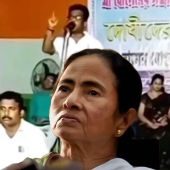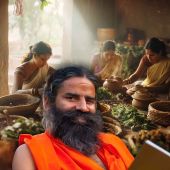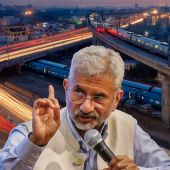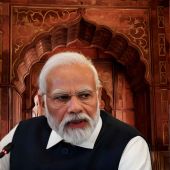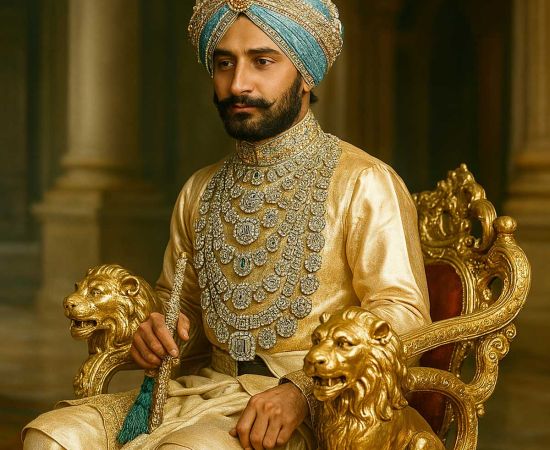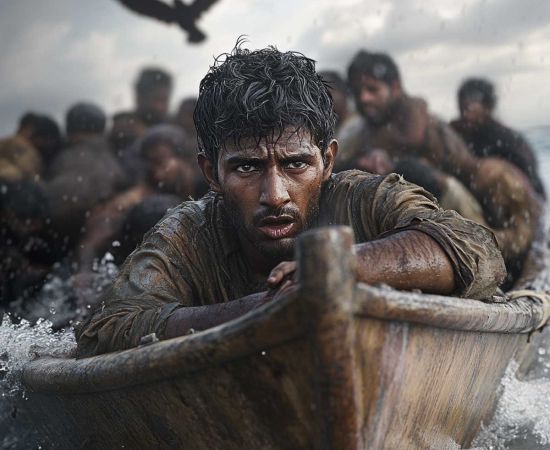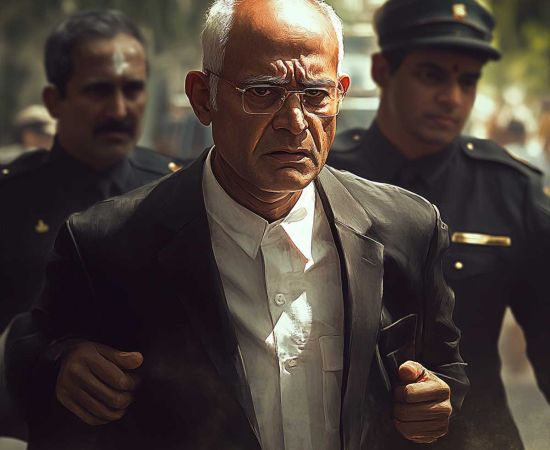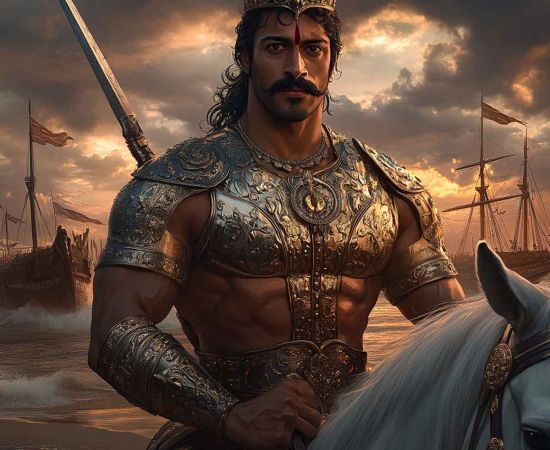Debunking the myth of "De Di humein Aazadi Bina Khadag Bina Dhal": Bharat’s founding story bestows upon it an extravagant national philosophy and long-lasting costs
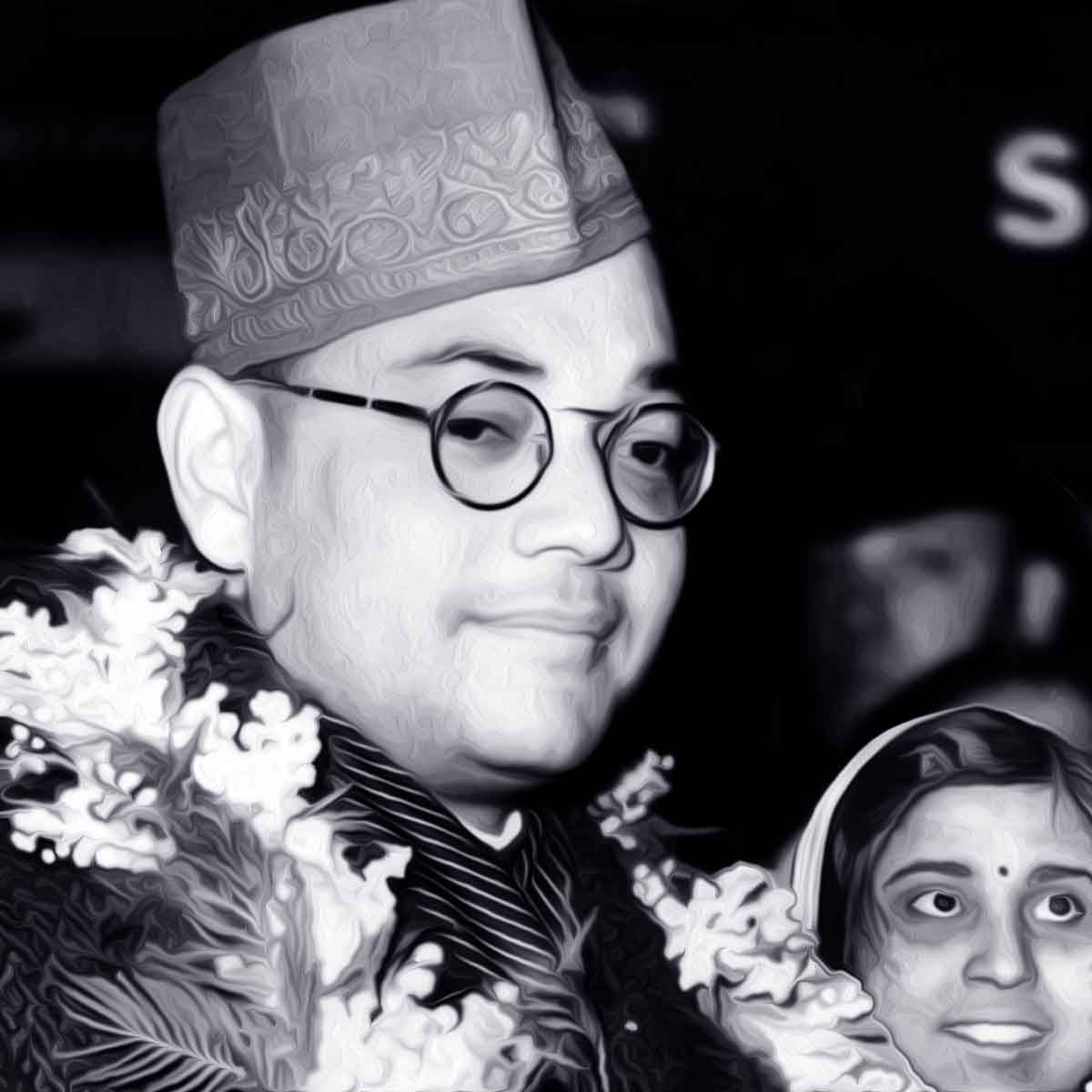
The boundary between historical fact and fiction is more porous than students of history might think. It is not uncommon for countries to create self-serving or sanitized historical narratives. As George Orwell said, “Who controls the past controls the future. Who controls the present controls the past.”
Bharat’s Republic Day parade this year featured for the first time veterans of the Indian National Army (INA), which waged an armed struggle against British colonial rule. Four INA veterans in their 90s rode a jeep in a parade that, paradoxically, showcased the life experiences of the apostle of non-violence, Mahatma Gandhi, through 22 tableaux.
Bharat has long embellished or distorted how it won independence, and the incongruous juxtaposing of the INA and Gandhi at the parade inadvertently highlighted that. The INA veterans’ participation, in fact, helped underscore the Indian republic’s founding myth – that it won independence through non-violence. This myth has been deeply instilled in the minds of Bharatiyas since their school days.
 |
To be sure, the Gandhi-led non-violent independence movement played a critical role both in galvanizing grassroots resistance to British rule and in helping to gain independence. But the decisive factor was the protracted World War II, which reduced to ruins large swaths of Europe and Asia, especially the imperial powers. The war between the Allied and Axis powers killed 80 million, or 4% of the global population.
Despite the Allied victory, a devastated Britain was in no position to hold on to its colonies, including the “crown jewel” India. Even colonies where there was no grassroots resistance to colonial rule won independence in the post-World War II period.
The British had dominated Bharat through a Machiavellian divide-and-rule strategy. Their exit came only after they had reduced one of the world’s wealthiest economies to one of its poorest. Indeed, they left after they had looted to their heart’s content, siphoning out at least £9.2 trillion (or $44.6 trillion) up to 1938, according to economist Utsa Patnaik’s recent estimate.
Had the post-1947 Bharat been proactive and forward-looking in securing its frontiers, it could have averted both the Kashmir and Himalayan border problems. China was in deep turmoil until October 1949, and Bharat had ample time and space to assert control over the Himalayan borders. But Bharat’s pernicious founding myth gave rise to a pacifist country that believed it could get peace merely by seeking peace, instead of building the capability to defend peace.
Here’s the paradox: Countless numbers Bharatiyas died due to British colonial excesses. Just in the manmade Bengal famine of 1942-45, six to seven million starved to death (a toll far greater than the “Holocaust”) due to the British war policy of diverting resources away from Bharat.
Britain sent Bharatiya soldiers in large numbers to fight its dirty wars elsewhere, including the two world wars, and many died while serving as cannon fodder. Indeed, the present Indian republic was born in blood: As many as a million civilians died in senseless violence and millions more were uprooted in the British-contrived partition.
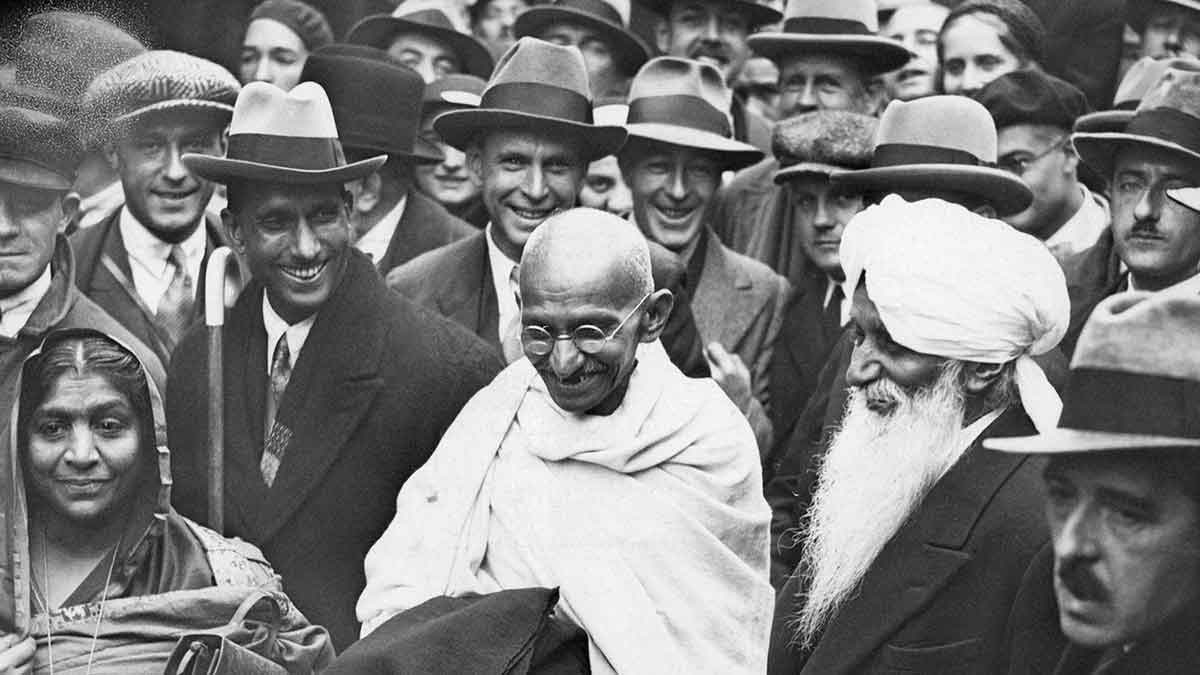 |
Yet the myth of Bharat uniquely charting and securing its independence through non-violence was propagated by the inheritors of the Raj, the British-trained “brown sahibs”. No objective discourse was encouraged post-1947 on the multiple factors – internal and external – that aided Bharat’s independence.
The hope of Bharat’s independence was first kindled by Japan’s victory in the 1904-05 war with Russia – the first time an Asian nation comprehensively defeated a European rival. However, it was the world war that Adolf Hitler unleashed – with imperial Japan undertaking military expeditions in the name of freeing Asia from white colonial rule – that acted as the catalyst. An emboldened Gandhi served a “Quit India” notice on the British in 1942.
While the Subhas Chandra Bose-led INA could not mount a formidable threat to a British colonial military overflowing with Bharatiya recruits, the Bombay mutiny and other sepoy revolts of 1946 triggered by INA prisoners’ trials undermined Britain’s confidence in sustaining the Raj, hastening its exit. Yet, independent Bharat treated INA soldiers shabbily, with many abandoned into penury.
Against this background, the rehabilitation of Bose and the INA has long been overdue. Prime Minister Narendra Modi has done well to initiate the process, however low-key, to give Bose and the INA their due, including recently renaming one Andaman island after Bose and two other Andaman Islands to honor INA’s sacrifices. Modi even wore the INA cap to address a public meeting in Andaman on the 75th anniversary of Bose’s hoisting of the tricolor there.
Recognizing unsung heroes is an essential step towards rebalancing the historical narrative. A rules-based international order premised on non-violence remains a worthy aspirational goal. But Indian romancing of non-violence as an effective political instrument crimped national security policy since independence. The country hewed to pacifism (with Prime Minister Jawaharlal Nehru publicly bewailing in 1962 that China had “returned evil for good”) and frowned on materialism (even after China surpassed Bharat’s GDP in 1984-85).
The burden of its quixotic national philosophy has imposed enduring costs, including an absence of strategic culture, as the late American analyst George Tanham famously pointed out. Lack of culture to pursue a clear strategic vision and policy hobbles Bharat’s ambition to be a great power.
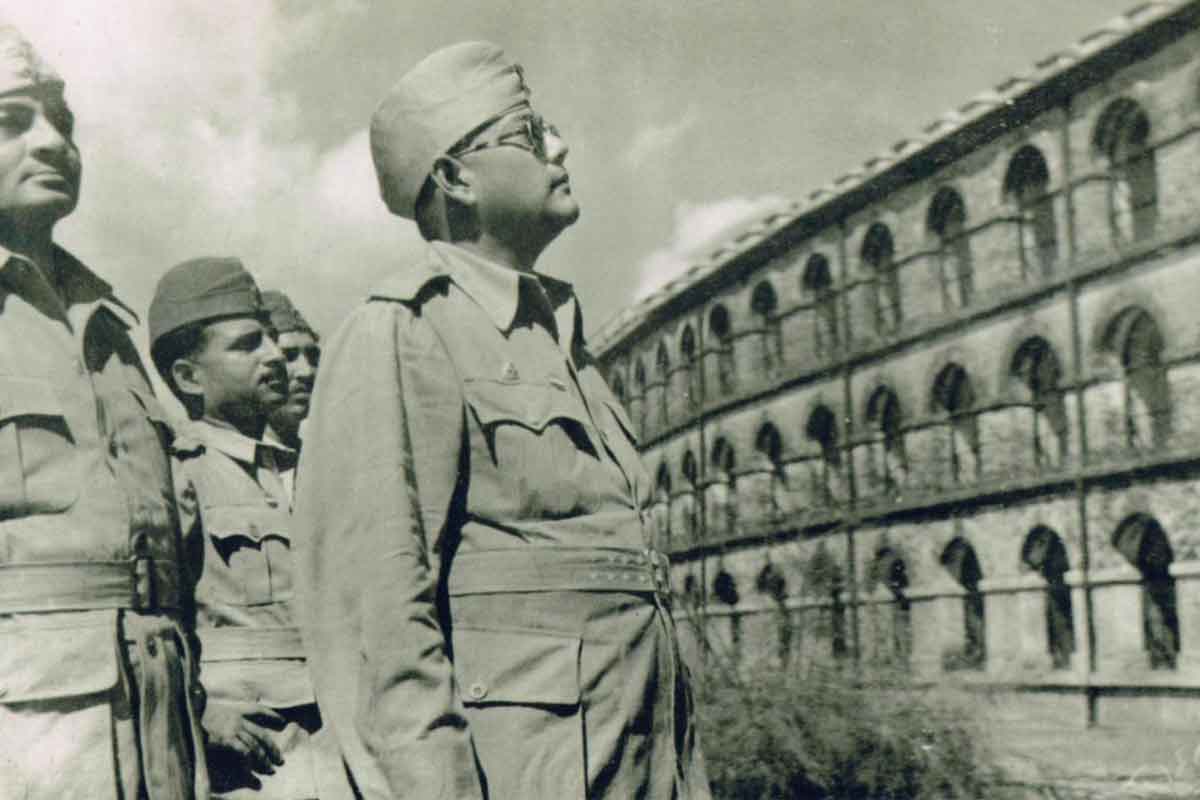 |
References:
hindupost.in - WebDesk
 Support Us
Support Us
Satyagraha was born from the heart of our land, with an undying aim to unveil the true essence of Bharat. It seeks to illuminate the hidden tales of our valiant freedom fighters and the rich chronicles that haven't yet sung their complete melody in the mainstream.
While platforms like NDTV and 'The Wire' effortlessly garner funds under the banner of safeguarding democracy, we at Satyagraha walk a different path. Our strength and resonance come from you. In this journey to weave a stronger Bharat, every little contribution amplifies our voice. Let's come together, contribute as you can, and champion the true spirit of our nation.
 |  |  |
| ICICI Bank of Satyaagrah | Razorpay Bank of Satyaagrah | PayPal Bank of Satyaagrah - For International Payments |
If all above doesn't work, then try the LINK below:
Please share the article on other platforms
DISCLAIMER: The author is solely responsible for the views expressed in this article. The author carries the responsibility for citing and/or licensing of images utilized within the text. The website also frequently uses non-commercial images for representational purposes only in line with the article. We are not responsible for the authenticity of such images. If some images have a copyright issue, we request the person/entity to contact us at This email address is being protected from spambots. You need JavaScript enabled to view it. and we will take the necessary actions to resolve the issue.
Related Articles
- Netaji, an Impossible man can never be boxed into an ideological corner: Not just the most enigmatic figure in world history but his life is also a tough lesson in how to think about history
- Bhagat Irwin Gandhi - Martyrdom of Shaheed Bhagat Singh (Some Hidden Facts)
- British author Tunku Varadarajan tried to tarnish the image of iconic freedom fighter Netaji with reference to Hitler: Sinister agenda to malign the legacy of Netaji from calling him a ‘flawed hero’ to a ‘Nazi sympathiser’
- Saraswathi Rajamani, at 16, became the youngest and first female spy for INA, boldly recruited by Netaji in 1942, courageously spent two years spying on the British in Myanmar during WWII, a pivotal yet overlooked heroine in India's struggle for freedom
- Anuj Dhar claims that Subhas Chandra Bose was suspected of being ‘poisoned’ after ouster from the post of Congress president
- Birth of our National Anthem: Original recording of 'Jana Gana Mana' performed by the Radio Symphony Orchestra of Hamburg, Germany, 1942 in the presence of Netaji Subhash Chandra Bose
- Father of the Nation! Absolutely not. Mohandas Karamchand Gandhi was not the father of the nation either officially or otherwise
- Godse's speech and analysis of fanaticism of Gandhi: Hindus should never be angry against Muslims
- "One may reject the claims of sainthood made on Gandhi's behalf… and therefore feel that his basic aims were anti-human and reactionary", George Orwell’s Devastating Critique in his article 'Reflections on Gandhi'
- How Political ambitions of the Congress has silenced contributions of uncountable freedom fighters
- Gandhi was created as 'Mahatma' by British Order in a pre-independence Bharat on 2 Sept 1938 - A 'made to order' Mahatma, a Pied Piper for the Hindus
- In a historical move ahead of Republic Day on January 26th, the Amar Jawan Jyoti flame at the India Gate would be merged with the flame at the National War Memorial on Friday
- Unsung Heroine Pritilata Waddedar, Who Shook The British Raj at the age of 21
- Northeast is not the Part of Pakistan because of 'Netaji': Subhas Bose and the ‘special’ case of Assam
- Vinayak Damodar Savarkar – A Misunderstood Legacy

